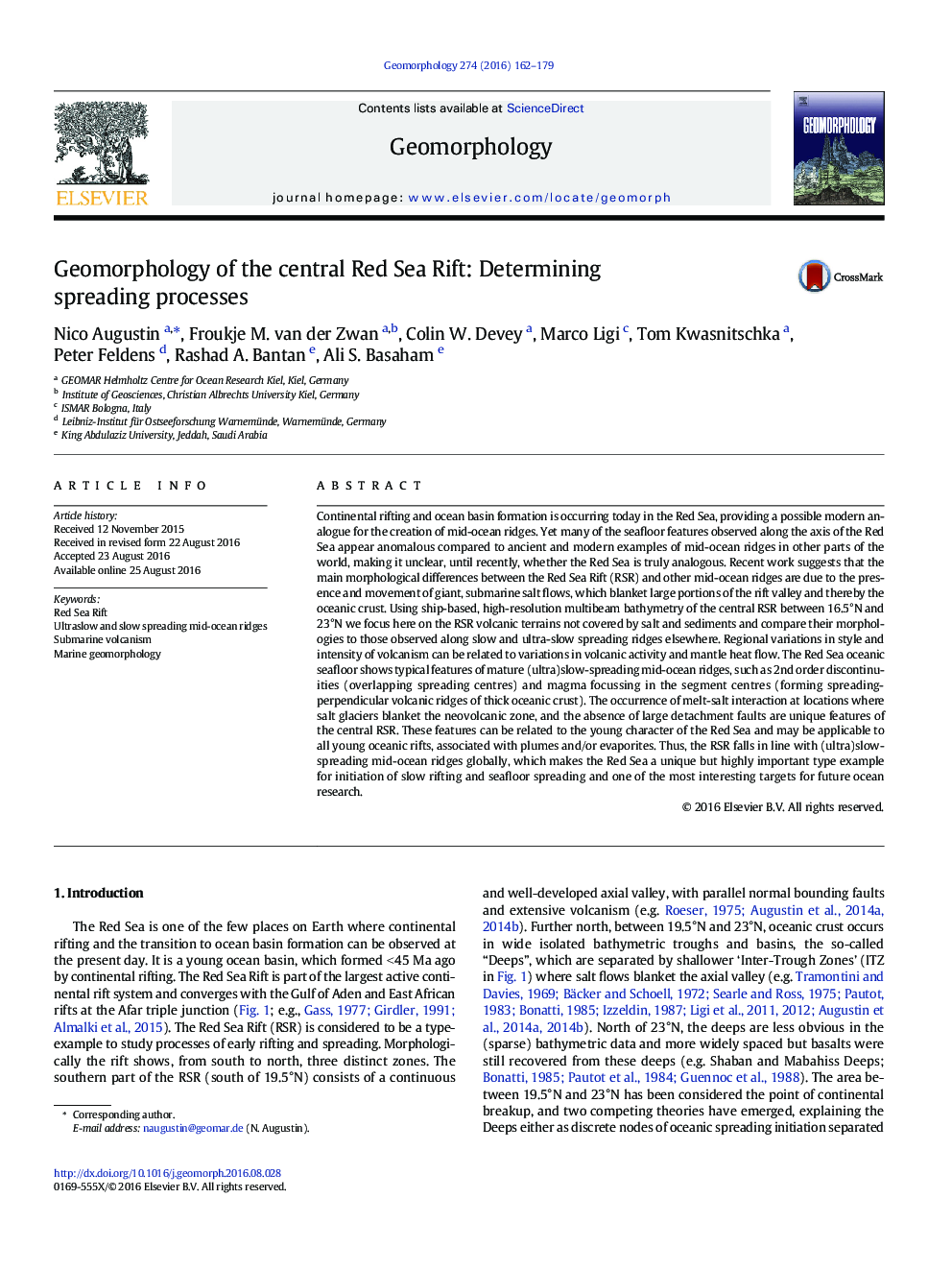| کد مقاله | کد نشریه | سال انتشار | مقاله انگلیسی | نسخه تمام متن |
|---|---|---|---|---|
| 4683917 | 1635375 | 2016 | 18 صفحه PDF | دانلود رایگان |
• The Red Sea Rift overall morphology is typical for (ultra)slow-spreading ridges.
• Distribution of various volcanic morphotypes correlates with mantle temperatures.
• Spreading-perpendicular ridges indicate stable magma focusing over 8–12 My.
• Warm mantle under the RSR prohibits the occurrence of oceanic core complexes.
• Specific characteristics of the RSR morphology are related to its young age.
Continental rifting and ocean basin formation is occurring today in the Red Sea, providing a possible modern analogue for the creation of mid-ocean ridges. Yet many of the seafloor features observed along the axis of the Red Sea appear anomalous compared to ancient and modern examples of mid-ocean ridges in other parts of the world, making it unclear, until recently, whether the Red Sea is truly analogous. Recent work suggests that the main morphological differences between the Red Sea Rift (RSR) and other mid-ocean ridges are due to the presence and movement of giant, submarine salt flows, which blanket large portions of the rift valley and thereby the oceanic crust. Using ship-based, high-resolution multibeam bathymetry of the central RSR between 16.5°N and 23°N we focus here on the RSR volcanic terrains not covered by salt and sediments and compare their morphologies to those observed along slow and ultra-slow spreading ridges elsewhere. Regional variations in style and intensity of volcanism can be related to variations in volcanic activity and mantle heat flow. The Red Sea oceanic seafloor shows typical features of mature (ultra)slow-spreading mid-ocean ridges, such as 2nd order discontinuities (overlapping spreading centres) and magma focussing in the segment centres (forming spreading-perpendicular volcanic ridges of thick oceanic crust). The occurrence of melt-salt interaction at locations where salt glaciers blanket the neovolcanic zone, and the absence of large detachment faults are unique features of the central RSR. These features can be related to the young character of the Red Sea and may be applicable to all young oceanic rifts, associated with plumes and/or evaporites. Thus, the RSR falls in line with (ultra)slow-spreading mid-ocean ridges globally, which makes the Red Sea a unique but highly important type example for initiation of slow rifting and seafloor spreading and one of the most interesting targets for future ocean research.
Figure optionsDownload as PowerPoint slide
Journal: Geomorphology - Volume 274, 1 December 2016, Pages 162–179
